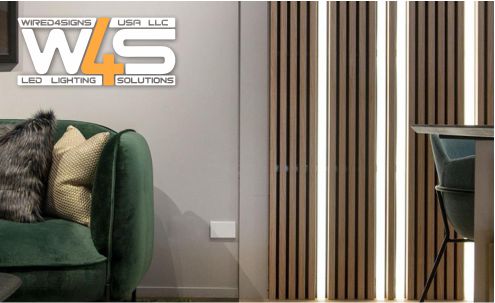
When moving into a new location or planning to move to a new location, one of the many key considerations you need to give attention to is how well-lit the area is that you will be living in.
It is important that the tube lights you select not only be easy on the eyes but also be powerful enough to illuminate all of the nooks and crannies of your home, consume a reasonable amount of energy, and be affordable.
LED, which stands for light-emitting diode, is a device that readily fulfills all of these requirements and is more generally referred to by its abbreviation. These days, an LED tube light is the choice that the vast majority of individuals make.
Here we discuss the best ways to choose LED tube lights for your home.
1. Remember that not all LED lights are the same
LED light tubes and LED strip lights are becoming increasingly important as a result of the fact that they provide the same level of brightness as conventional lights while consuming less power. It’s possible that you’ve realized this already, but not all LED knobs are created equal.
There are a lot of different LED brands on the market, and many of them don’t live up to their guarantees or truly stick to industry standards. Consequently, it is best to choose with a manufacturer that has a good reputation and choosing LED light tubes and LED strip lights.
2. Find the best shading
The knobs display an incredible spectrum of shading, from purple to red, as well as several shades of white and yellow.
Warm white and delicate white, both from the Syska line, will provide a hue that is somewhat more yellow than pure white. A system known as the kelvin is used to measure the temperatures of the shade.
The light produced by a warm yellow light source has a lower color temperature and a lower Kelvin value (about 3000K), which results in a more comfortable light.
3. Consider lumens over wattage
Wattage, contrary to the common belief, is not a reliable indicator of brightness. Although there is a correlation between the amount of wattage drawn by conventional radiant models and the brightness, watts is not the best measure for LEDs because of their efficiency.
The LED chip is the primary factor that determines how the LED light is implemented. Chips of superior quality survive longer and lose less value over time, both in terms of the amount of light they produce and the quality of that light.
It is imperative that caution be exercised when dealing with LED tube lights manufactured in China using LED chips of inferior quality.
When purchasing an LED light, in addition to these factors, it is possible to take into consideration additional metrics, such as the rated power, the amount of light output, the dimensions, the color, and the average life.
Final Thoughts
LED lights are often regarded as being incomparably superior to conventional light bulbs; hence, individuals who have not yet made the transition should give it significant thought.
LED tube lights have a substantially longer lifespan than standard bulbs, require significantly less power to run, and produce significantly more light.
They are also less likely to be impacted by changes in weather or other atmospheric conditions and are a far more environmentally friendly option as they contain fewer toxic chemicals and heavy metals. In addition, they are less likely to be affected by variations in the weather.
Interesting Related Article: “5 Home Interior Lighting Trends Right Now “

